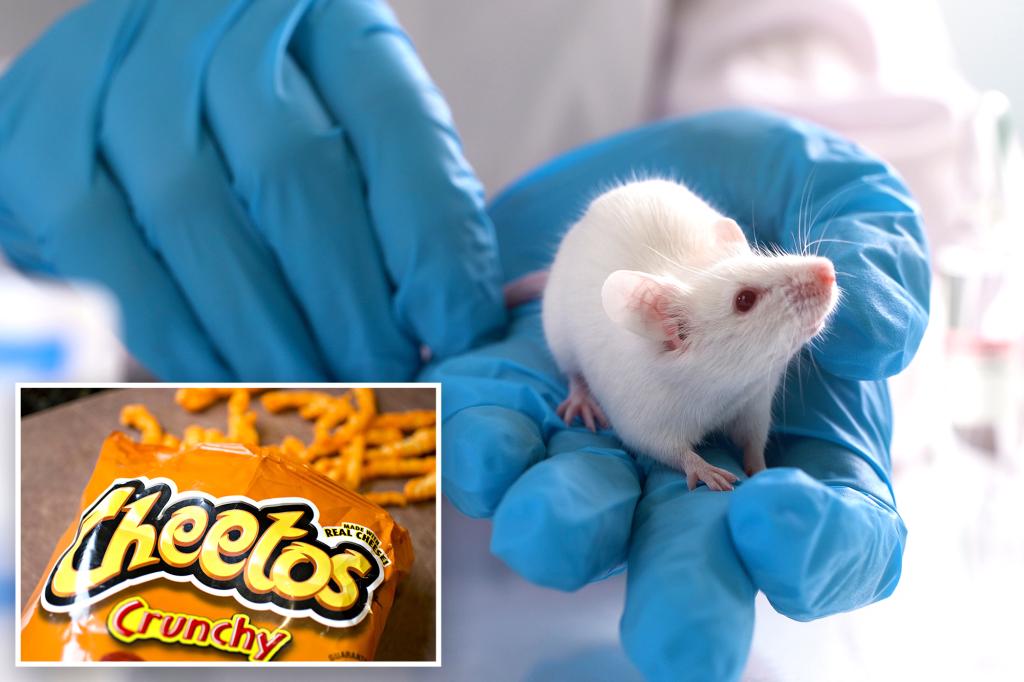Researchers have discovered that the popular food dye, Tartrazine, used in Cheetos has the ability to turn the skin of mice completely transparent, allowing their organs to be visible. The dye was tested on various parts of the mice, revealing muscle pulsations and blood vessels in their brains. The phenomenon occurs because the cells of the mice are comprised of membranes that hold fats in a watery style, causing light to pass through the cells when the dye is applied, resulting in transparent skin.
Though the result of transparent skin in mice is surprising, the doses of the coloring agent found in Cheetos are significantly lower, making it unlikely for anyone to experience the same effect by consuming the snack. The FDA-certified name for Tartrazine is FD&C Yellow No. 5, and it is found in small amounts in various popular snacks and drinks. One researcher involved in the study reassured that consuming a bag of Doritos would not make one’s belly or gut transparent. However, researchers are considering testing the dye on humans next, as larger doses could potentially make it easier to locate veins for blood draws. Human skin is much thicker than that of the lab mice, which raises questions about the potential effects on humans.
The researchers involved in this study were impressed by the simple yet clever way that the food dye was able to make the mice’s skin transparent. They were able to observe various internal organs of the mice due to this phenomenon. Despite the intriguing results, it is important to note that the doses used in the study were much higher than what would typically be found in foods and drinks consumed by humans. The application of the dye caused light to pass through the cells of the mice, resulting in a see-through effect that allowed researchers to visually examine internal structures.
The potential applications of this research extend beyond simply observing organs in mice. Researchers suggest that larger doses of the dye could be used in the future to make locating veins for medical procedures easier. By making the skin slightly transparent, it may be possible to visualize veins more clearly, which could be beneficial for tasks such as blood draws. This highlights the practical implications of the study beyond its initial discovery of the transparency effect on mice. However, the transition from testing on mice to human trials raises ethical considerations and questions about the safety and effectiveness of using such dyes on humans.
While the idea of a food dye making human organs visible through the skin may seem like science fiction, the study demonstrates the potential advancements in medical imaging and visualization techniques. By harnessing the properties of certain compounds, researchers are able to create innovative methods for examining internal structures. The transparency effect observed in mice opens up possibilities for future research in medical diagnostics and procedures. Despite the initial shock value of the findings, it is crucial to approach any potential human testing with caution and thorough ethical considerations to ensure the safety and well-being of participants.
In conclusion, the study on the transparency effect of a food dye on mice’s skin reveals the fascinating and surprising capabilities of certain compounds. Beyond just creating a visual spectacle, the research points towards practical applications in the field of medicine, particularly in the realm of medical imaging and vein visualization. While the idea of transparent human skin may sound like something out of a sci-fi movie, the reality is that advancements in research and technology are continually pushing the boundaries of what is possible. As researchers move towards human trials, it will be important to approach the implications and potential risks of these innovations with careful consideration and ethical oversight.


